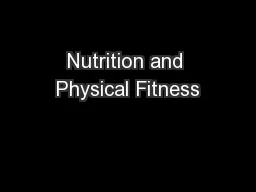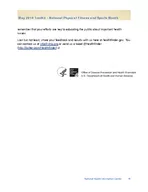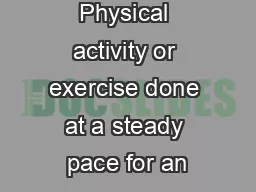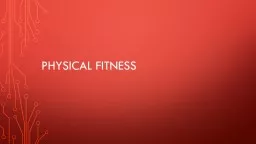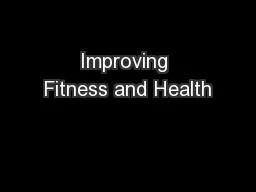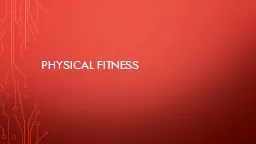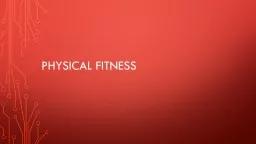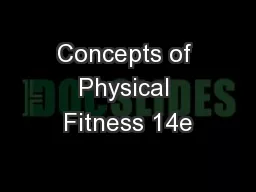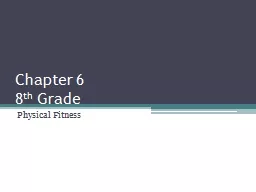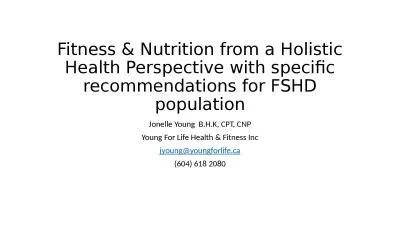PPT-Nutrition and Physical Fitness
Author : ellena-manuel | Published Date : 2018-11-21
Health In this unit you will learn about BMI BMR Calories Food Labels Fat Minerals Calcium and oh so much more Overweight and obesity In the united states 688 of
Presentation Embed Code
Download Presentation
Download Presentation The PPT/PDF document "Nutrition and Physical Fitness" is the property of its rightful owner. Permission is granted to download and print the materials on this website for personal, non-commercial use only, and to display it on your personal computer provided you do not modify the materials and that you retain all copyright notices contained in the materials. By downloading content from our website, you accept the terms of this agreement.
Nutrition and Physical Fitness: Transcript
Download Rules Of Document
"Nutrition and Physical Fitness"The content belongs to its owner. You may download and print it for personal use, without modification, and keep all copyright notices. By downloading, you agree to these terms.
Related Documents

